Hotter than average temperatures are anticipated across most of the contiguous United States for the remainder of the summer and into early fall, according to the latest outlook issued by The Weather Company, an IBM Business.
Above-average temperatures will dominate areas form the Pacific Northwest into the Plains and much of the East. Temperatures will be the most above average from north-central Montana southeastward into northeastern Colorado, north-central Kansas and much of Nebraska.
A few areas may trend near average or slightly warmer during the three-month period, including much of California, southwestern Nevada, southwestern Arizona, Florida, southern Georgia and southern Alabama, as well as most of Maine, northern Michigan and northeastern Minnesota.
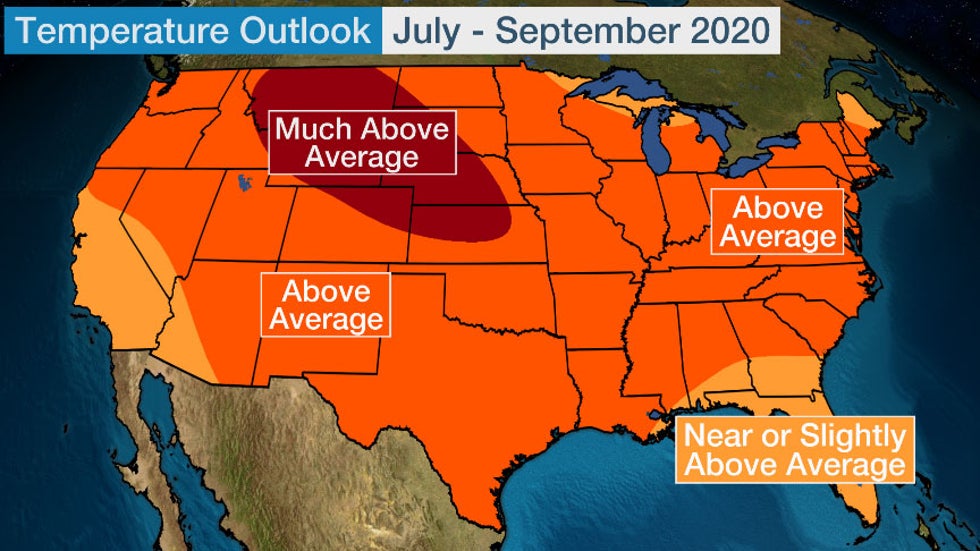 July through September 2020 temperature outlook from The Weather Company, an IBM Business.
July through September 2020 temperature outlook from The Weather Company, an IBM Business.There are a few factors that drive this hot forecast.
Changes in the sea surface temperatures in the equatorial tropical Pacific Ocean are among them. Water temperatures in the equatorial tropical Pacific are monitored for indications of a developing El Niño or La Niña. ENSO-neutral conditions, meaning neither El Niño nor La Niña, are currently present, according to NOAA.
A cooling trend continues in this region of the Pacific, which indicates La Niña conditions may be developing. The cooling of the water temperatures in the equatorial tropical Pacific will likely continue into the fall, according to the latest computer models.
Temperatures during the summer in the contiguous U.S. typically are warmer than average when a transition to La Niña occurs.
The water temperatures in the Pacific are also associated with an atmospheric disturbance in the Indian Ocean called the Madden-Julian Oscillation (MJO). The phases of the MJO expected this summer also support a hot one for much of the Lower 48.
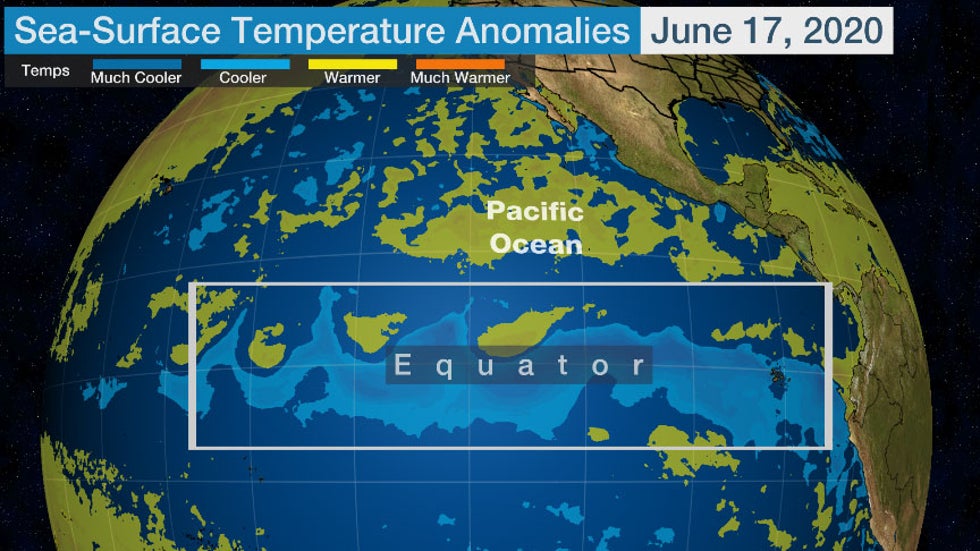 Sea-surface temperature anomalies
Sea-surface temperature anomaliesAnother consideration in the summer outlook is soil-moisture temperature. Higher soil-moisture levels are associated with cooler temperatures, while lower levels often correspond with warmer temperatures.
Soil-moisture levels are still above average from the north-central U.S. into the Southeast and mid-Atlantic. However, "there has been significant drying across significant parts of the northern U.S., a sharp difference from last spring, and another reason to favor a warmer summer this year relative to last," Dr. Todd Crawford, chief meteorologist at The Weather Company, pointed out. In addition, this drying trend is expected to continue.
Here's a closer look at what to expect month by month.
July
Above-average temperatures are expected from the Northwest into the Plains and much of the East in July.
Temperatures will be the most above average from eastern Washington and northeastern Oregon into much of Idaho, Montana, Wyoming, the western Dakotas, Nebraska, northeastern Colorado and central Kansas.
There will be several areas where temperatures will likely trend near average or slightly warmer. One of these areas includes Florida, southern Georgia, southern Alabama, southeastern Mississippi and far southeastern Louisiana. Parts of the northern tier from northern Maine into Michigan, Wisconsin and northeastern Minnesota is another area that may have conditions closer to average.
Temperatures will also be near or slightly above average in parts of the Southwest, including Southern and Central California into southwestern Nevada and much of Arizona.
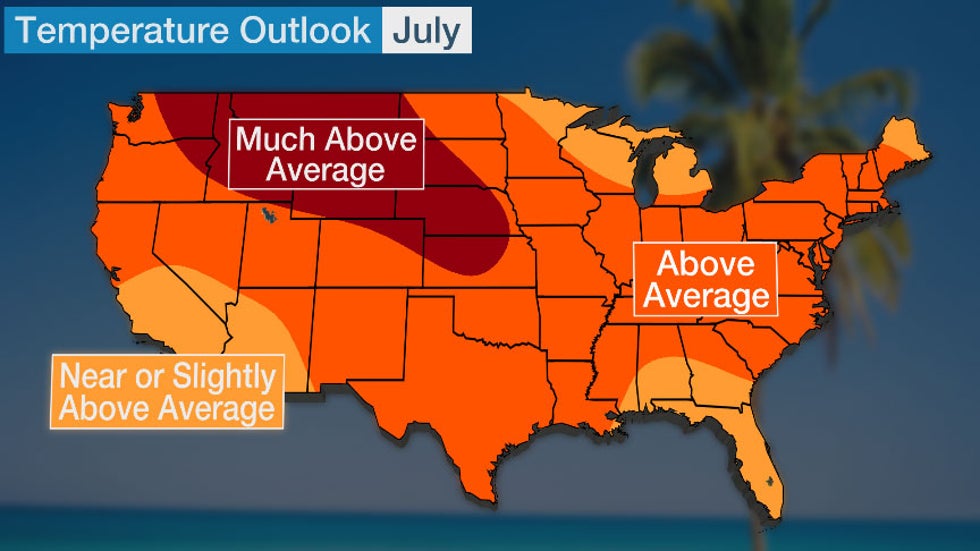 July 2020 temperature outlook from The Weather Company, an IBM Business.
July 2020 temperature outlook from The Weather Company, an IBM Business.August
Hotter than average conditions will once again extend across much of the country, from much of the Northeast into the central U.S. and into the Pacific Northwest.
Areas from the northern Rockies into the southern Rockies and eastward into much of the Plains will experience temperatures the farthest above average.
A bit farther west, temperatures may trend closer to average. This includes most of California into southwestern Oregon, western Nevada and southwestern Arizona.
Most of the Southeast, along with Maine, northern New Hampshire and far northeastern Vermont, can also expect temperatures to be near to slightly warmer than average as meteorological summer comes to a close.
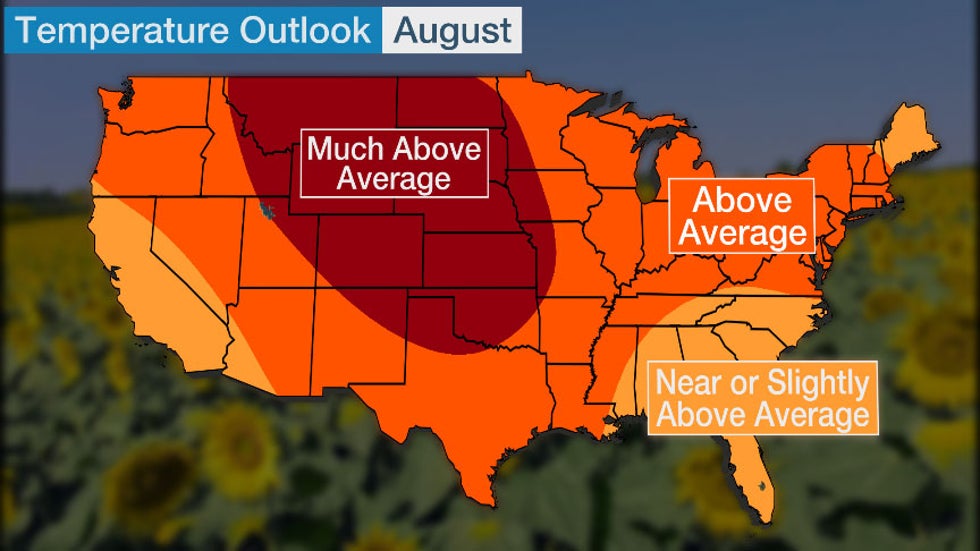 August 2020 temperature outlook from The Weather Company, an IBM Business.
August 2020 temperature outlook from The Weather Company, an IBM Business.September
A warmer than average start to fall is anticipated for most of the Lower 48.
When La Niña conditions are present heading into fall, warmer than average temperatures typically prevail across much of the contiguous United States. Crawford also noted that climate models are "rather aggressive with the warmth" across the U.S. this fall.
Temperatures are expected to be near average or slightly warmer in areas toward the West Coast, as well as in southeastern Texas and southern Florida. This will also be the case in northern Maine, much of Michigan, northern Wisconsin and northeastern Minnesota.
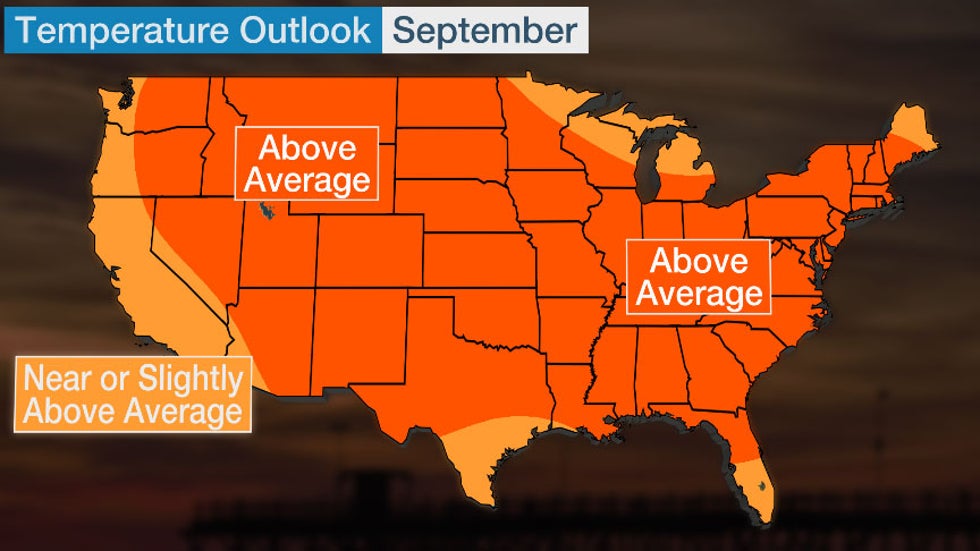 September 2020 temperature outlook from The Weather Company, an IBM Business.
September 2020 temperature outlook from The Weather Company, an IBM Business.The Weather Company’s primary journalistic mission is to report on breaking weather news, the environment and the importance of science to our lives. This story does not necessarily represent the position of our parent company, IBM.
The Weather Company’s primary journalistic mission is to report on breaking weather news, the environment and the importance of science to our lives. This story does not necessarily represent the position of our parent company, IBM.

No comments:
Post a Comment